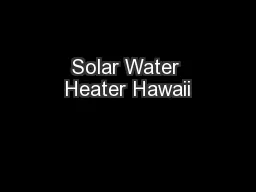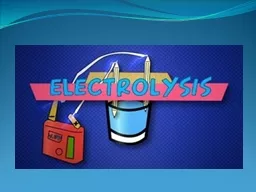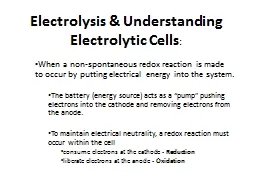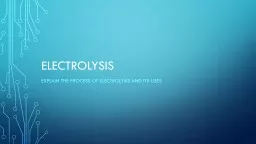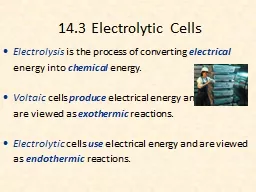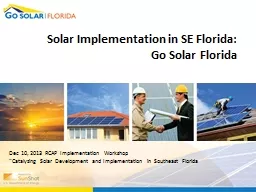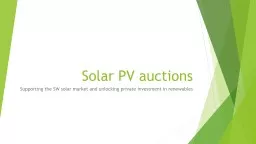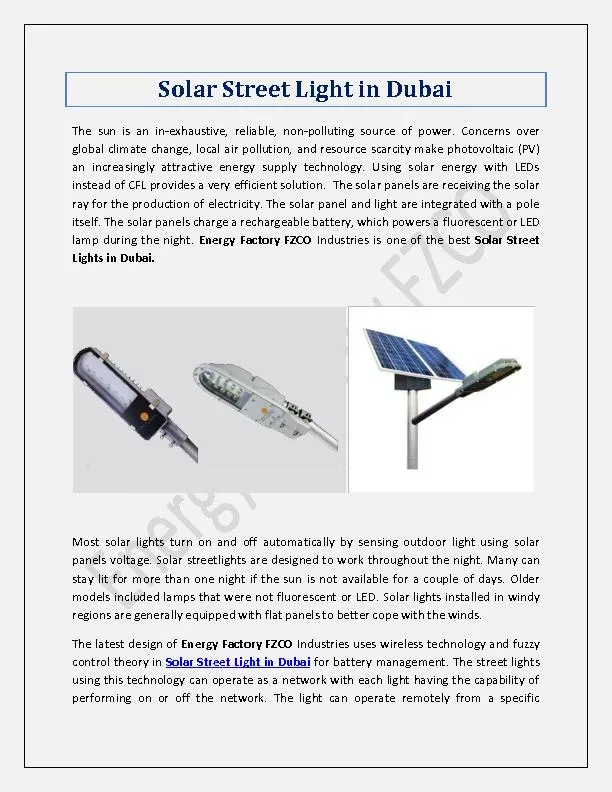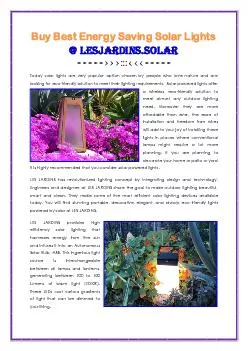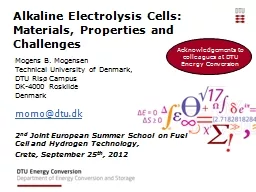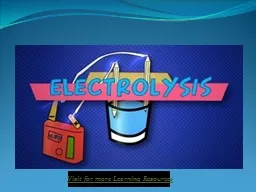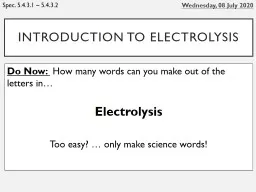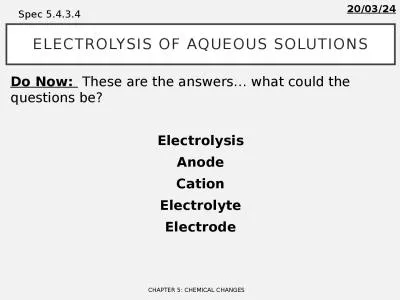PDF-Florida Solar Energy Center Electrolysis Page 1
Author : teresa | Published Date : 2022-09-07
Key Wordselectrolysiselectrolyteelement Understanding Solar Energy Teacher PageElectrolysisStudent ObjectiveThe studentwill be able to explain how theelements hydrogen
Presentation Embed Code
Download Presentation
Download Presentation The PPT/PDF document "Florida Solar Energy Center Electro..." is the property of its rightful owner. Permission is granted to download and print the materials on this website for personal, non-commercial use only, and to display it on your personal computer provided you do not modify the materials and that you retain all copyright notices contained in the materials. By downloading content from our website, you accept the terms of this agreement.
Florida Solar Energy Center Electrolysis Page 1: Transcript
Download Rules Of Document
"Florida Solar Energy Center Electrolysis Page 1"The content belongs to its owner. You may download and print it for personal use, without modification, and keep all copyright notices. By downloading, you agree to these terms.
Related Documents


